 |
 |
 |
| |
LOWER UPTAKE OF DOLUTEGRAVIR AMONG WOMEN OF REPRODUCTIVE POTENTIAL VS MEN—KENYA
|
| |
| |
CROI 2021 March 6-10 Reported by Jules Levin
Matthew L . Romo1, Rena Patel2, Jessie Edwards3, John M. Humphrey4, Elizabeth A. Kelvin5, Mercy Maina6, Katarzyna Wyka5, Kara Wools-Kaloustian4, Denis Nash1, for IeDEA
1City University of New York Institute for Implementation Science in Population Health, New York, NY, USA, 2University of Washington, Seattle, WA, USA, 3University of North Carolina at Chapel Hill, Chapel Hill, NC, USA, 4Indiana University, Indianapolis, IN, USA, 5City University of New York, New York, NY, USA, 6Moi Teaching and Referral Hospital, Eldoret, Kenya
Background: The transition to dolutegravir (DTG)-containing combination antiretroviral therapy (cART) is expected to benefit population health, but its use among women of reproductive potential-the largest group affected by the HIV epidemic in sub-Saharan Africa-has been controversial because of a potential association between DTG use at conception and neural tube defects. In July 2019, the World Health Organization (WHO) recommended DTG as the preferred treatment option for all populations with HIV. Given the changes in recommendations, we sought to examine potential disparities in DTG uptake.
Methods: We used data from the International epidemiology Databases to Evaluate AIDS (IeDEA) consortium for adults in Kenya at sites that had implemented DTG. We computed the proportion of individuals newly initiating cART with DTG and the cumulative proportion of individuals already on cART switching to DTG. We present these quarterly proportions overall and stratified by reproductive age and gender (women <50y, women ≥50y, men) and pregnancy status after site DTG implementation. We used hierarchical logistic regression to determine the association of reproductive potential and status with starting cART with DTG and switching to DTG-containing cART; models had a random intercept for site and were adjusted for receiving care before/after the July 2019 WHO recommendation.
Results: Between July 2017-March 2020, 80,070 patients sought care, consisting of 48% women <50y, 14% women ≥50y, 34% men, and 5% pregnant women, and 20% of these patients started cART. Disparities in DTG uptake emerged in Q3 2018 (Figure). In Q1 2020, nearly all (≥98%) women ≥50y and men were starting cART with DTG compared with 57% of women <50y and 24% of pregnant women; about three-quarters (>70%) of treatment- experienced women ≥50y and men had switched to DTG-containing cART compared with 34% of women <50y and 14% of pregnant women. During follow-up, women <50y and pregnant women had significantly lower odds of starting cART with DTG (adjusted odds ratio [aOR] 0.18 and 0.04, respectively; both p<0.001), and switching to DTG (aOR 0.15 and 0.04, respectively; both p<0.001), compared with men.
Conclusion: We identified major disparities in DTG uptake among women of reproductive potential and pregnant women in Kenya. Efforts should focus on equitable access to DTG and increasing its uptake among women of reproductive potential who are starting or already on cART.
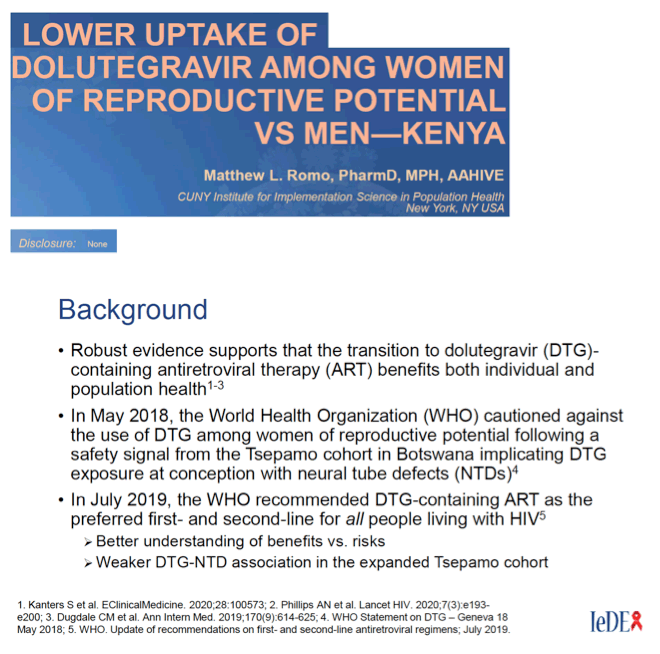
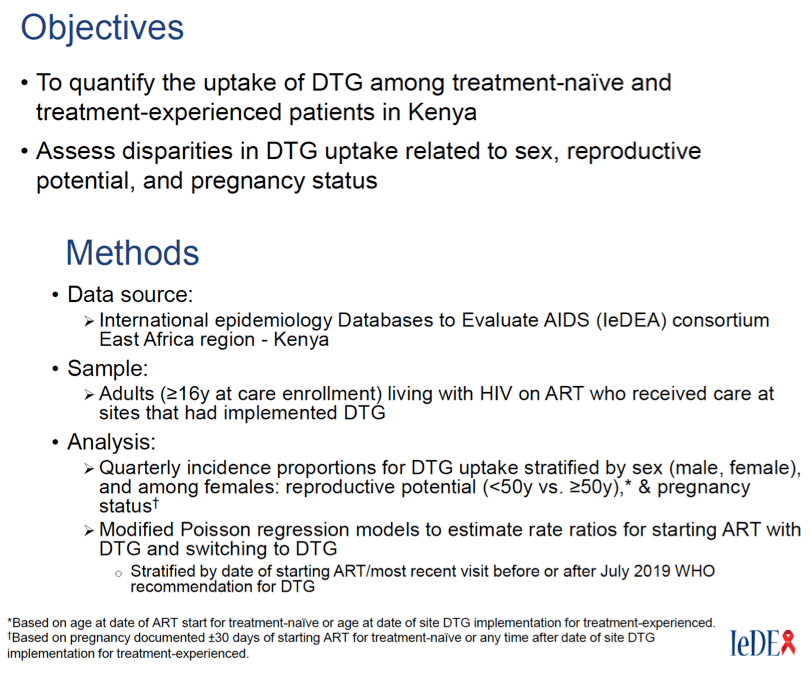
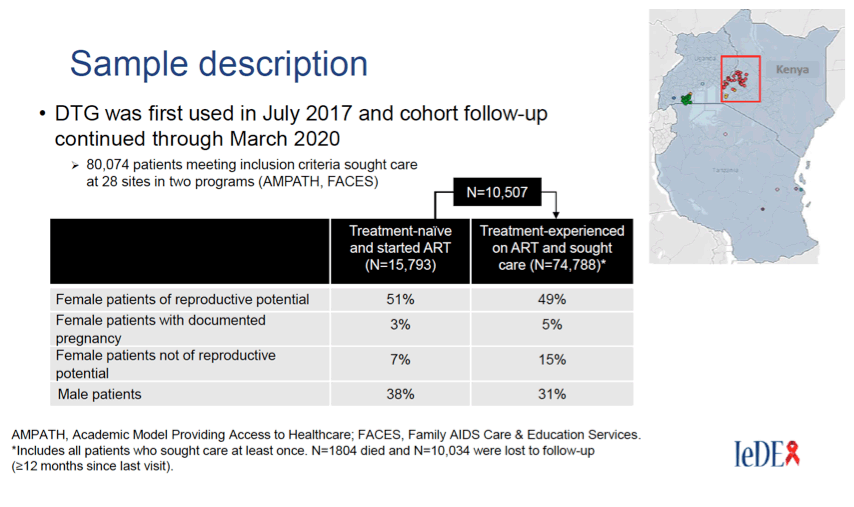
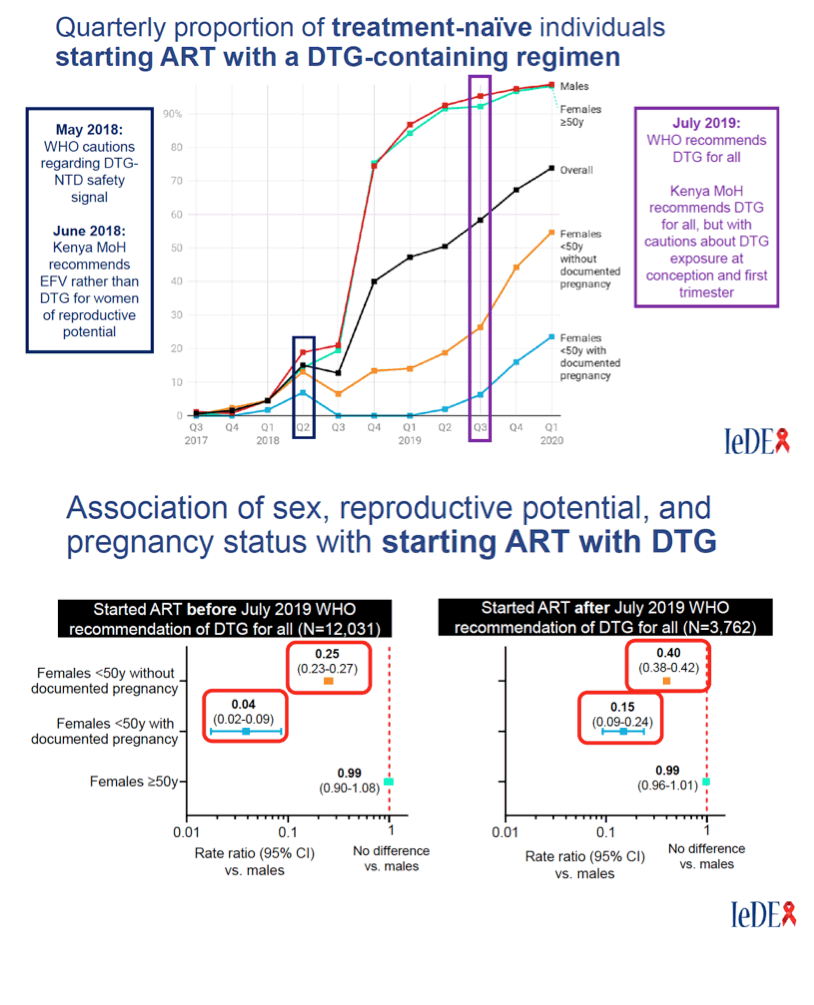
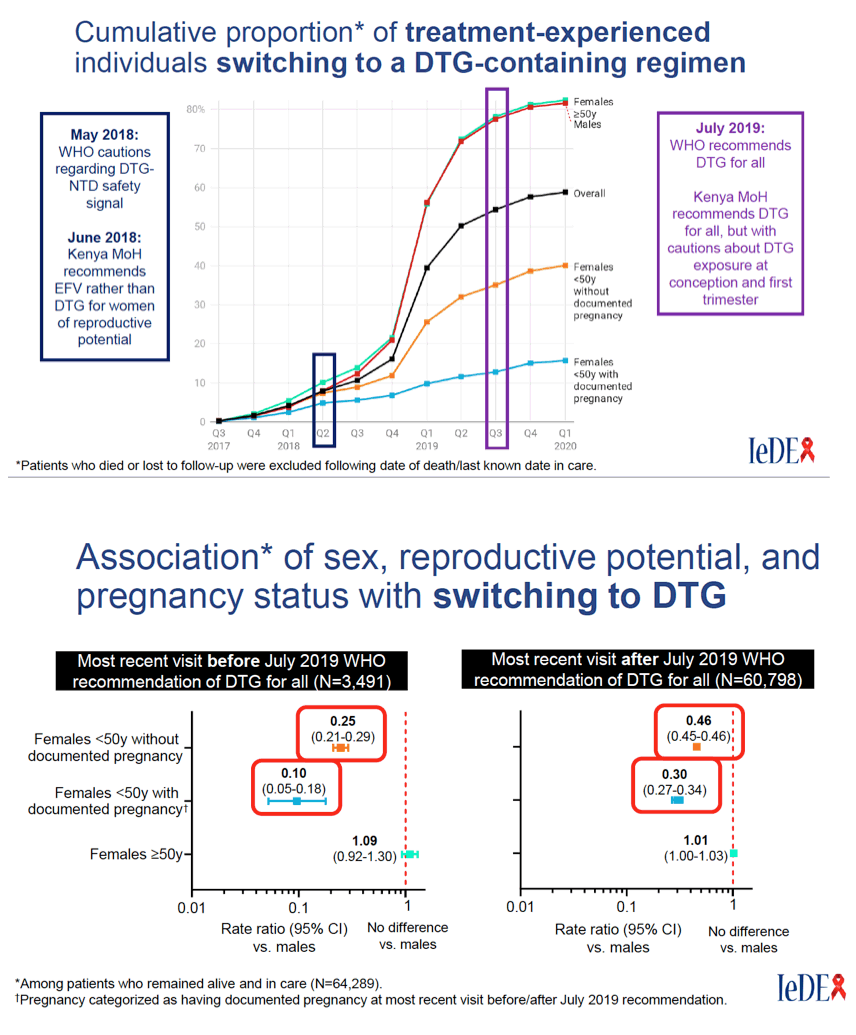
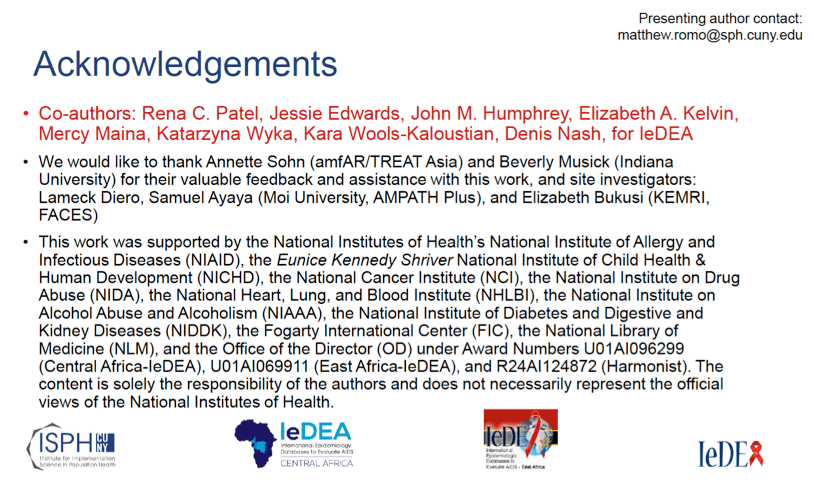
|
| |
|
 |
 |
|
|